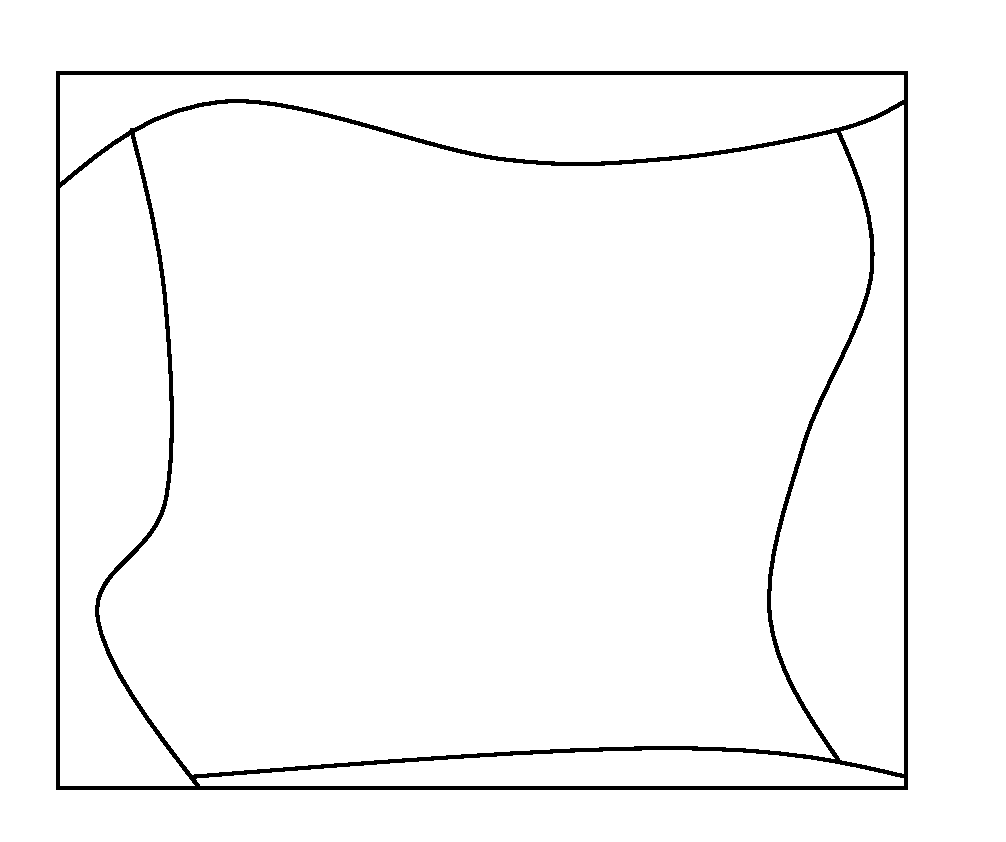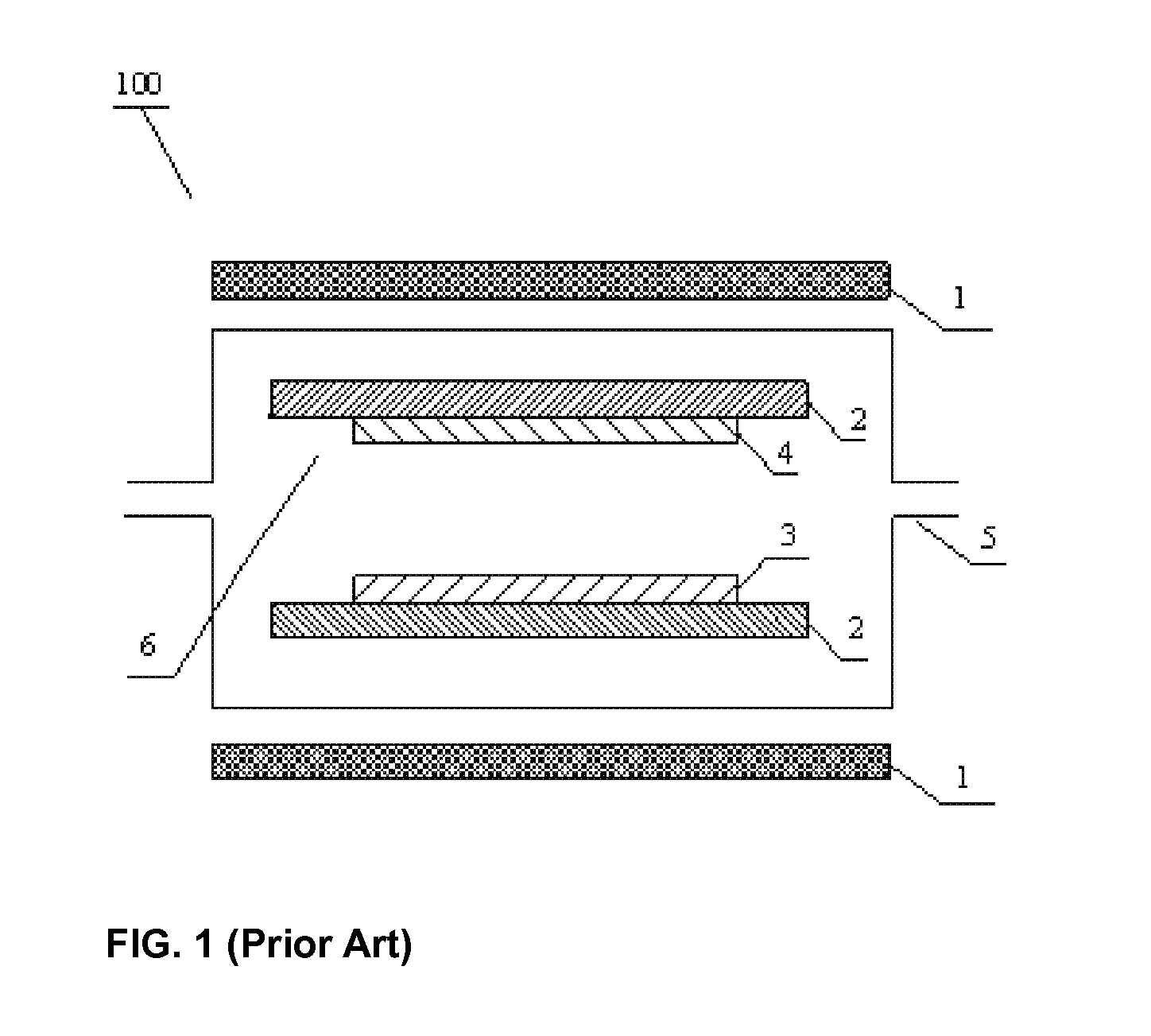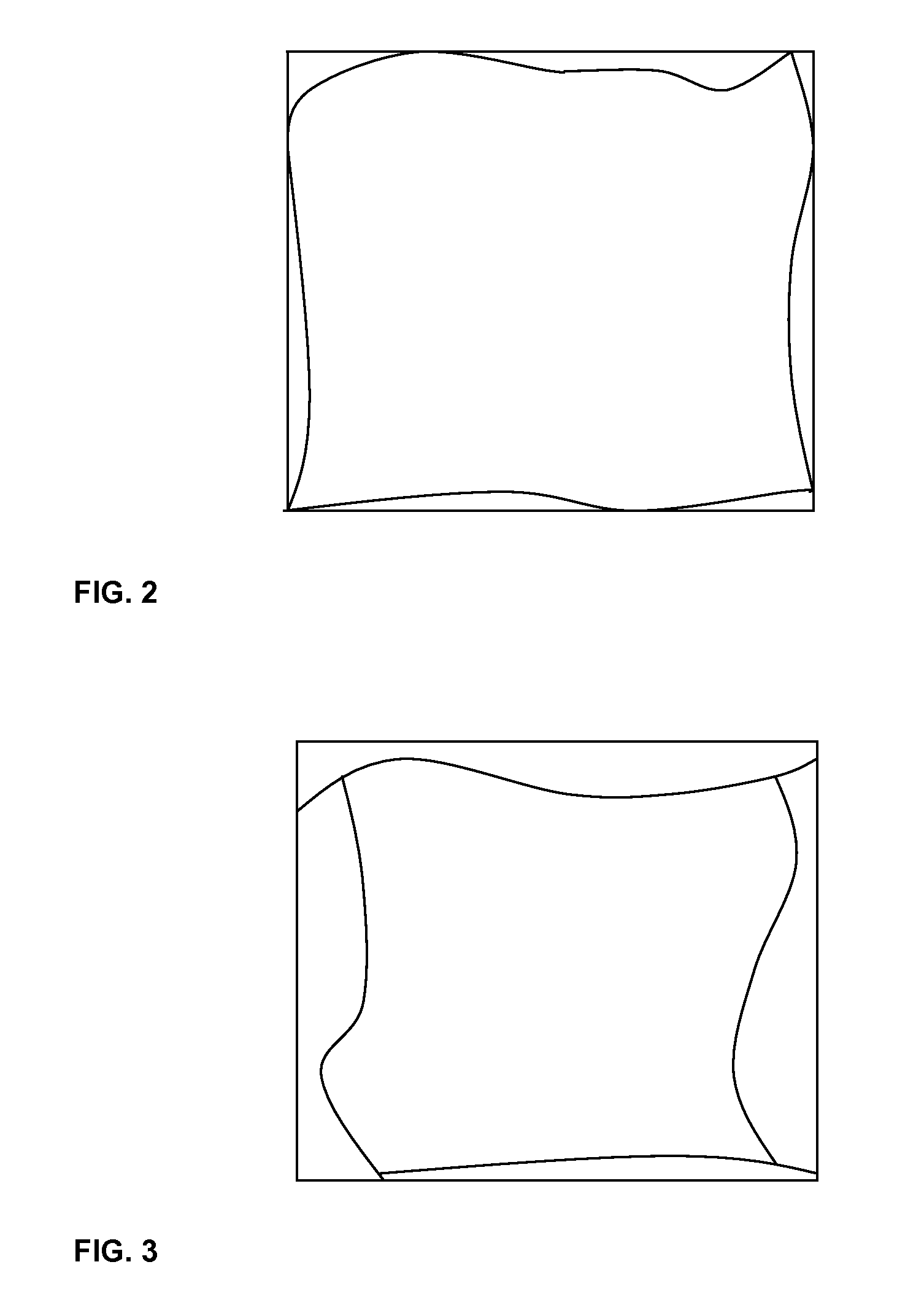Method for preparing cadmium sulfide film
a technology of cadmium sulfide and film, which is applied in the direction of vacuum evaporation coating, coating, semiconductor devices, etc., can solve the problems of reducing the production efficiency, corrosive smoke and gas may be produced, and polluting the environmen
- Summary
- Abstract
- Description
- Claims
- Application Information
AI Technical Summary
Benefits of technology
Problems solved by technology
Method used
Image
Examples
example 1
Preparing the Evaporation Source
[0047]Cadmium particles and sulfur particles are mixed according to a molar ratio of about 1:1.1. 95 g mixture and 5 g cadmium chloride particles are added into 20 g propanediol. The mixture is grinded to form a slurry.
[0048]The slurry is then coated onto the surface of the bottom graphite plate 2 with an area of about 210 mm×210 mm. Then it is dried under about 150° C. for 5 hours to form a source material coating layer with a thickness of about 100 μm.
[0049]Closed Space Sublimation.
[0050]The coated plate is placed into a CSS device. The distance between the coating layer and the second substrate is adjusted to be 4 mm. Then a mixture of Ar and oxygen gas with a volume ratio of 1:1 is pumped into the device. The gas pressure is about 100 Pa.
[0051]The coated plate is heated to about 580° C. at a temperature increasing rate of about 80° C. / min.
[0052]The temperature of the second substrate is about 500° C. The thickness of the cadmium sulfide film is co...
example 2
[0055]The only difference from example 1 is: 99 g mixture of cadmium particles and sulfur particles, and 1 g cadmium chloride particles are added into 30 g propanediol. The mixture is then grinded to form a slurry.
example 3
[0056]The only difference from example 1 is: 90 g mixture of cadmium particles and sulfur particles, and 10 g cadmium chloride particles are added into 40 g propanediol. The mixture is then grinded and mixed to form the slurry.
PUM
| Property | Measurement | Unit |
|---|---|---|
| Temperature | aaaaa | aaaaa |
| Temperature | aaaaa | aaaaa |
| Temperature | aaaaa | aaaaa |
Abstract
Description
Claims
Application Information
 Login to View More
Login to View More - R&D
- Intellectual Property
- Life Sciences
- Materials
- Tech Scout
- Unparalleled Data Quality
- Higher Quality Content
- 60% Fewer Hallucinations
Browse by: Latest US Patents, China's latest patents, Technical Efficacy Thesaurus, Application Domain, Technology Topic, Popular Technical Reports.
© 2025 PatSnap. All rights reserved.Legal|Privacy policy|Modern Slavery Act Transparency Statement|Sitemap|About US| Contact US: help@patsnap.com



